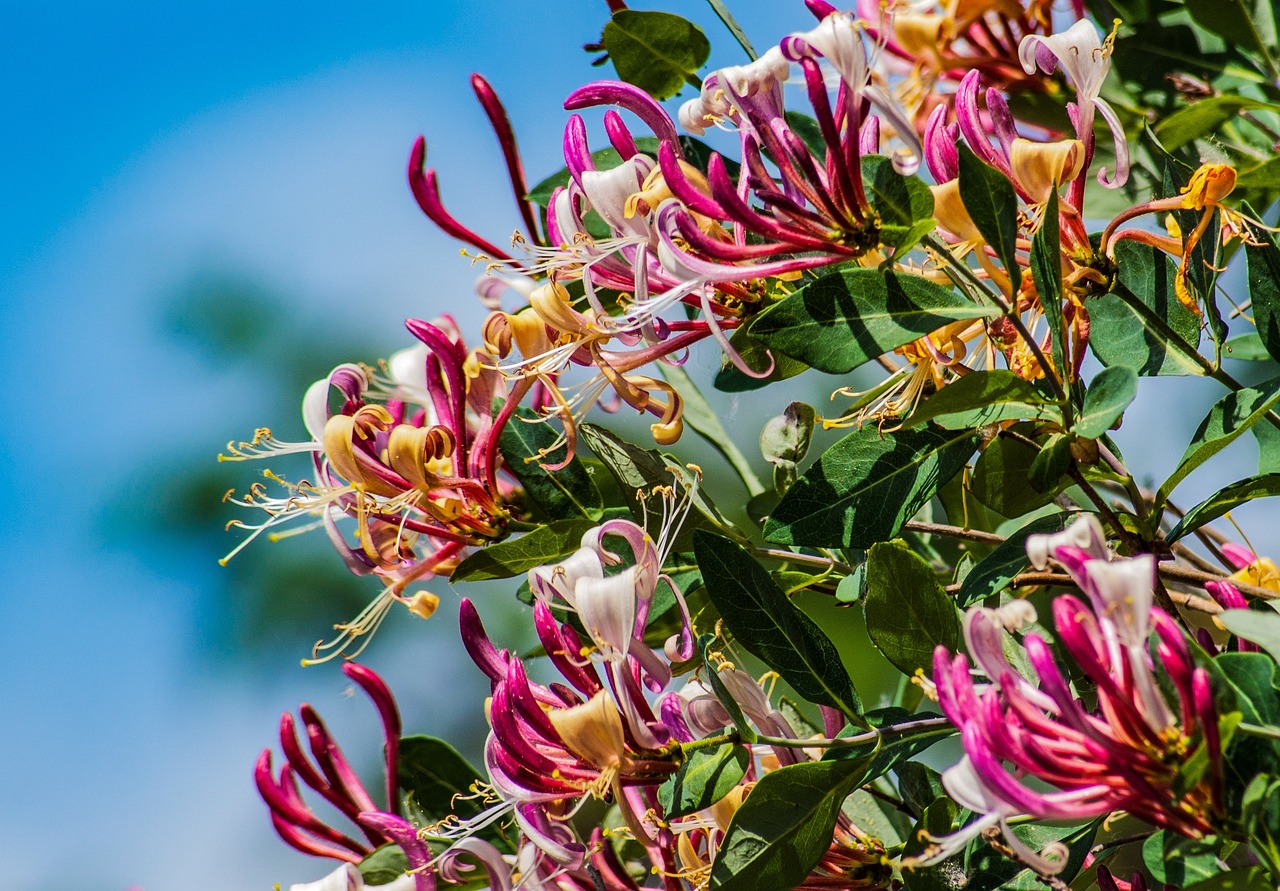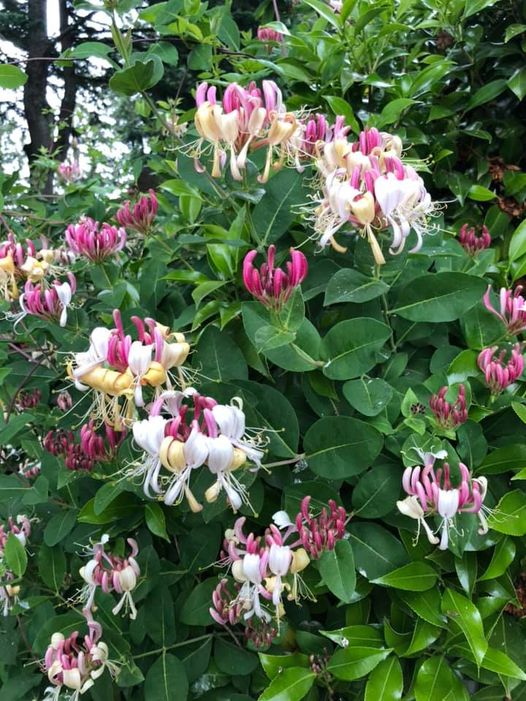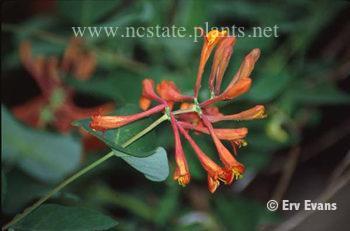
Honeysuckle vines weave a fragrant tapestry through gardens, their blooms beckoning pollinators with a perfume both intoxicating and delicate. But beyond their undeniable charm, honeysuckles offer a symphony of benefits for gardeners. They provide privacy screens, drape beautifully over arches and trellises, and some varieties even boast vibrant berries that add a pop of color. However, with so many varieties and specific needs, cultivating these beauties requires a touch of knowledge.
This comprehensive guide will equip you with everything you need to transform your garden into a honeysuckle haven.
This post may have affiliate links. This means that sometimes when you click a link on our site and make a purchase on Amazon, we may earn a small commission at no additional cost to you. We only recommend products we truly believe in, and your support helps keep us running!
Choosing Your Honeysuckle Harmony
Honeysuckles come in a dazzling array of shapes, sizes, and bloom colors. Selecting the ideal variety depends on your desired aesthetic and garden layout. Here’s a breakdown of some popular choices:
Trumpet Honeysuckle

This vigorous climber boasts vibrant coral blooms throughout summer and thrives in full sun or partial shade.
Japanese Honeysuckle

Renowned for its intensely fragrant white flowers, this fast-growing vine prefers full sun to partial shade. Be aware that it can become invasive in some regions.
Dutch Honeysuckle

This European native offers a delightful fragrance and beautiful yellow flowers. It prefers cooler climates and partial to full shade.
Brown Honeysuckle

This unique variety features clusters of yellow flowers followed by vibrant orange berries. It’s a good choice for partial shade locations.
Beyond Fragrance: Additional Considerations
While fragrance is a major draw for many gardeners, consider these additional factors when choosing your honeysuckle:
- Bloom Time: Different varieties flower at various times throughout the season. Select a combination to extend your floral display.
- Growth Habit: Some honeysuckles are twining vines, requiring support, while others are bushy and can function as groundcovers.
- Deer Resistance: Opt for deer-resistant varieties like Tatarian honeysuckle (Lonicera tatarica) if deer pose a threat in your area.
Planting the Seeds of Success
Once you’ve chosen your ideal honeysuckle companion, it’s time to prepare for planting. Here’s what you’ll need:
- Healthy Honeysuckle Vine: Select a plant from a reputable nursery. Look for vibrant foliage and strong stems.
- Shovel and Gardening Gloves
- Compost or Aged Manure
- Mulch
Finding the Perfect Spot
Honeysuckles generally thrive in well-drained soil and appreciate a location with full sun to partial shade. Ideally, the base of the vine should be in shade, while the upper portion receives sunlight for optimal flowering.
Preparing the Planting Site
- Dig a hole two to three times wider than the root ball of your honeysuckle vine.
- Amend the excavated soil with generous amounts of compost or aged manure to improve drainage and fertility.
- Carefully remove the honeysuckle from its container, gently loosening any tightly bound roots.
Planting Your Honeysuckle Vine
- Place the honeysuckle vine in the hole, ensuring the crown (the point where the stems meet the roots) sits level with the surrounding soil.
- Backfill the hole with the amended soil mixture, tamping down gently to remove air pockets.
- Water the plant thoroughly to settle the soil around the roots.
- Apply a 2-inch layer of mulch around the base of the vine, keeping it a few inches away from the stem to prevent rot.
Nurturing Your Honeysuckle Symphony
With proper care, your honeysuckle vine will reward you with years of beauty and fragrance. Here’s how to keep your plant thriving:
Watering
Deep water your honeysuckle vine weekly during the first year, especially during hot and dry periods. Once established, they are moderately drought tolerant but will benefit from occasional watering during extended dry spells.
Fertilizing
Apply a slow-release fertilizer formulated for flowering plants in early spring. Alternatively, you can use a balanced liquid fertilizer every few weeks during the growing season for container-grown honeysuckles.
Pruning
Regular pruning encourages bushier growth and promotes more flowers. Prune lightly throughout the growing season to remove dead, diseased, or crossed branches. More extensive pruning can be done in late winter or early spring when the plant is dormant.
Training and Support
As your honeysuckle vine matures, it will need a sturdy support structure to climb. Here are some options:
- Trellis: A classic choice, trellises come in various sizes and materials. Install the trellis before planting to avoid damaging the roots later.
- Fence: Honeysuckles can beautifully transform a bare fence into a fragrant and colorful privacy screen.
- Arbor: Create a charming entrance or seating area by training your honeysuckle to climb over an arbor.
- Posts and Wires: For a more rustic look, use sturdy posts and wires to create a framework for your vine.
Container Gardening
Honeysuckles can also be grown in containers, adding a touch of vertical interest to patios and balconies. Choose a pot with drainage holes at least twice the size of the root ball. Use a well-draining potting mix and ensure the container receives adequate sunlight. Water regularly and fertilize according to the specific needs of your chosen variety.
Pests and Diseases
Honeysuckles are generally resistant to pests and diseases. However, they can occasionally be bothered by aphids, scale insects, or powdery mildew. Regularly monitor your plant and address any issues promptly using organic methods whenever possible.
The Sweet Rewards: Enjoying Your Honeysuckle
Beyond the visual and olfactory delight, honeysuckles offer a variety of benefits:
- Pollinator Haven: Their fragrant blooms attract butterflies, hummingbirds, and bees, promoting a healthy ecosystem in your garden.
- Privacy Screen: Train honeysuckles along a fence or trellis to create a living privacy barrier.
- Cut Flowers: Certain honeysuckle varieties, like the Dutch honeysuckle, produce beautiful blooms that can be enjoyed indoors in a vase.
- Edible Berries: Some honeysuckle varieties, like the Brown honeysuckle, produce berries that can be used for jams and jellies (be sure to identify the specific variety and confirm edibility before consumption).
Conclusion
With their captivating fragrance, vibrant blooms, and versatility, honeysuckle vines weave a symphony of beauty and benefit into any garden. By following these guidelines, you can cultivate your own fragrant haven and enjoy the delightful melody of honeysuckles for years to come. So, get ready to be serenaded by the sweet scent of success as your honeysuckle vine thrives!
